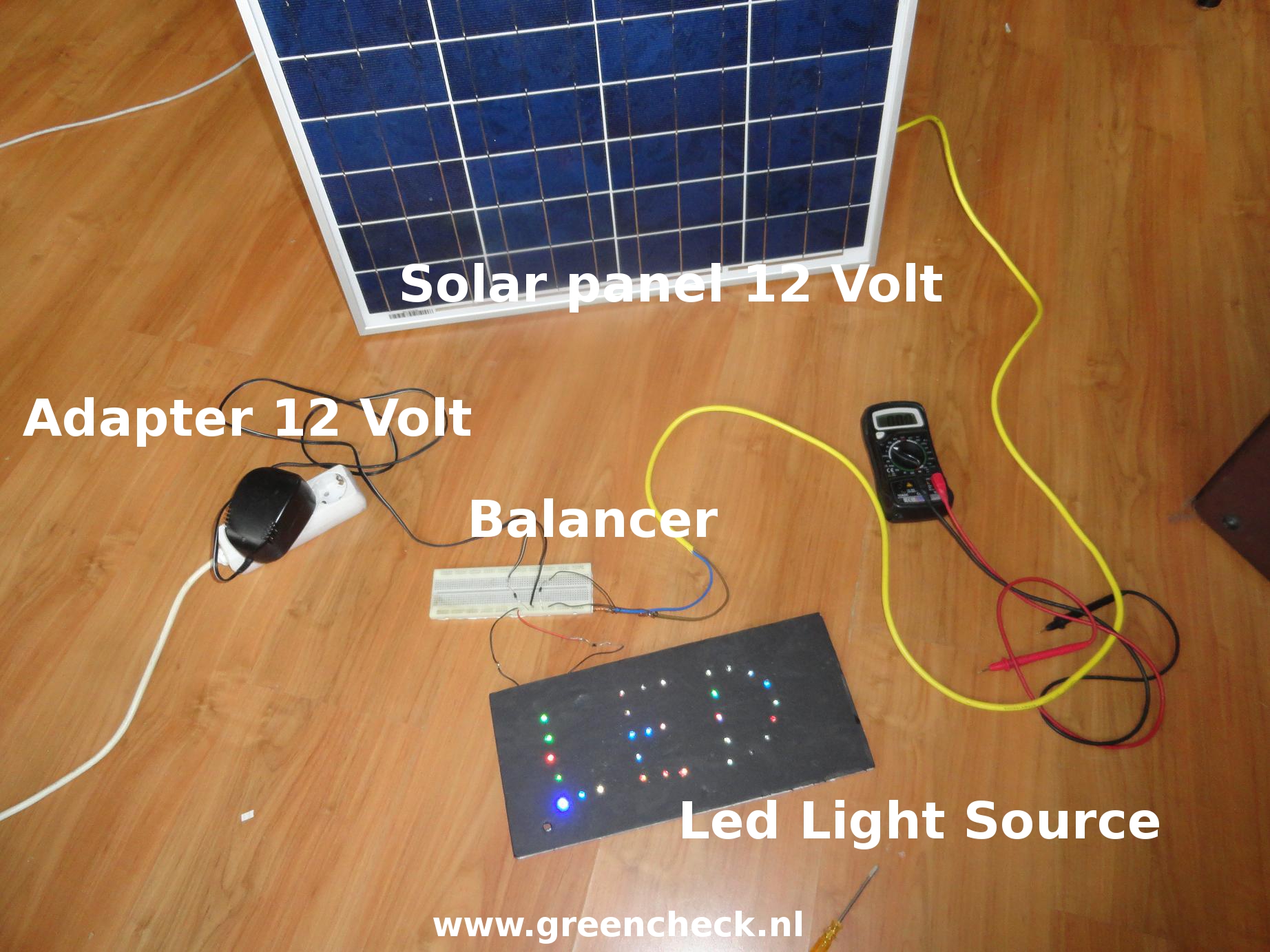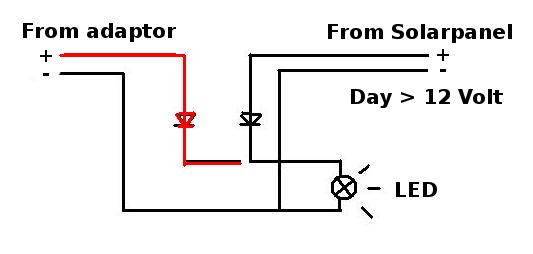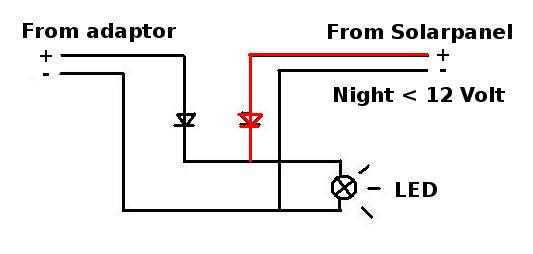Lots of times lights are on in the office or at home during the day. For one reason or another the ambient light is not enough, or you are deep inside a building or there is a requirement for certain amount of lux or lumen in the workspace. It is possible to use daylight to power your lights, especially with wattage LED, while also having light when it gets dark. The trick is to combine the input of a solar panel and an AC/DC converter so that de AC takes over from Solar when it gets dark.

We created below experimental setup. It has all elements needed, and works as advertised. The solar panel and the adapter provide 12 Volt to a balancer board, which then provides the power to the LED light source. The balancer board in it’s simplest design contains two diodes, that prevent current to run on the wrong direction.

During the day the solar panel produces power with a varable voltage. When this voltage rises above 12 Volt it shuts down the adaptor, because the current from the adaptor needs a voltage drop to flow. The current from the solar panel does not flow towards the adaptor because of the diode.

At night when the panel produces less power, it’s voltage drops to below 12 Volt and the adaptor can take over. Then no current flows to the panel because of the other diode. In the intermediary period between bright day and everning/night both the adaptor and the panel can deliver current. Because the panel voltage rises quickly if no current flows it takes the lead in delivering power. This setup guarantees the light will always be on.
Solar panels accumulate electrons like water blown up a ramp by a wind (of photons), if you allow current to flow the voltage drops to where the new electrons added by the ‘wind’ balance those removed by the current flow
This hypersimple setup means you don’t pay for an inverter nor batteries, yet you use the full capacity of the pane (which always only works during the day). An advanced control system is not hard to develop, what it does is give insight into where your power comes from by measuring the current from the panel and from the AC/DC adaptor.
Use of daylight and solar panels have subsidies in some countries (Holland under the EIA arrangement and SDE+). This method allows to get a higher yield from solar panel investments because the extra cost and complexity of having an inverter and linking to the grid is circumvented. Want to know more please contact info@greencheck.nl
To augment this system one can add a battery, and increase the capacity of the battery bank as the savings from not having to pay the power bill come in. There is a limit to the usefullness of batteries however, because all power is assumed to be used at all times, at least it may be smart to design the system that way.